Gardeners who live in Zone 8 have a distinct advantage when it comes to frost damage. The milder climate also opens up possibilities for plant selection. However, it can still be quite challenging if the soil is consistently damp, as not all plants are tough enough to be in such an environment and might be more susceptible to certain diseases.

In this section, we’ll explore a variety of plants and shrubs for wet areas in Zone 8 that are resilient enough to call this area their home.
Table of Contents
Sun-Loving Shrubs for Wet Areas Zone 8
Southern Bayberry (Myrica caroliniensis)
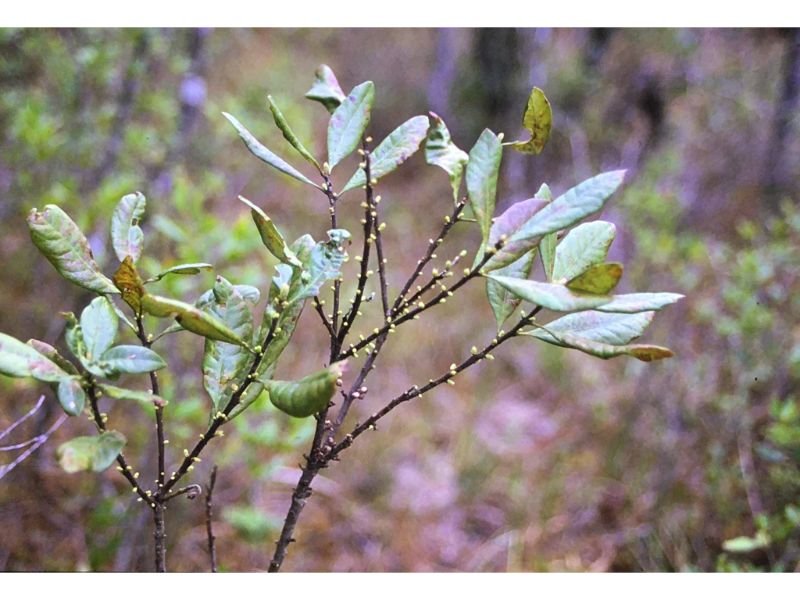
Approximate Size: 3 to 6 meters high and wide
Recommended Theme: Coastal garden, native garden, wildlife garden
A native to Southeastern America, southern bayberry shrubs can be found thriving happily in coastal areas. The berries of these woody perennials are covered in waxy substances that are usually used to make bayberry candles. Southern bayberry shrubs are tolerant to a wide range of soil as long as it’s well-drained and moist.
Did You Know?
Southern bayberries produce fragrant foliage and twigs, particularly if crushed or rubbed. The aroma can be described as aromatic with a hint of spice.
Swamp Azalea (Rhododendron viscosum)
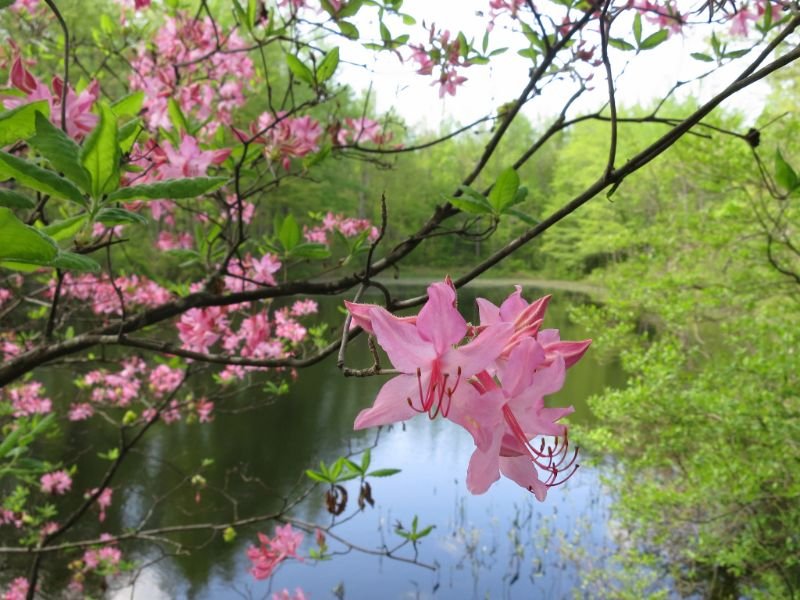
Approximate Size: 1.5 to 2.5 meters high and wide
Recommended Theme: Wetland garden, bog garden, butterfly garden
One of the most remarkable features of these deciduous shrubs for wet areas in Zone 8 is their delightful fragrance. Swamp azalea shrubs emit sweet and spicy-fragrant blooms that come in white and shades of pink. They’re highly adapted to wet soil as well as poor soil conditions, making them less-stressful plants to take care of!
Did You Know?
Swamp azalea shrubs are the home and host plant for the rare butterfly species called the eastern tiger swallowtail (Papilio glaucus) and spicebush swallowtail (Papilio troilus).
Sheep Laurel (Kalmia angustifolia)
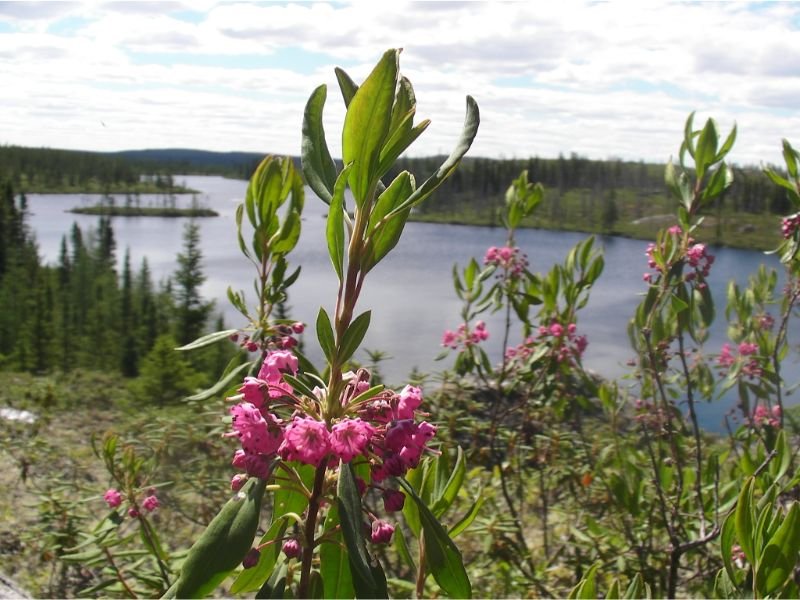
Approximate Size: 0.3 to 1 meter high and wide
Recommended Theme: Native garden, naturalized area
Looking for shrubs for wet areas in Zone 8 that also thrive well in acidic soil? Sheep laurel is the answer you’ve been looking for. Aside from their tolerance to acid soil, these small evergreen shrubs also have unique yet eye-catching blooms. The flowers are cup-shaped and come in shades of pink to purple. Sheep laurel gets their name from their association with sheep grazing.
Did You Know?
Sheep laurel shrubs contain toxins known as grayanotoxins, which are harmful to humans and animals if ingested. Therefore, these plants are not recommended to be planted in areas that are accessible to small children and pets.
Zone 8 Shrubs That Like Wet Soil and Shade
Swamp Hobbit Florida Anise (Illicium floridanum ‘Swamp Hobbit’)

Approximate Size: 0.6 to 1.2 meters high and wide
Recommended Theme: Shade garden, woodland garden, mixed borders
As the name suggests, swamp hobbit Florida anise is well adapted to wetland environments. Gardeners don’t need to worry about adding these shrubs to wet areas in Zone 8, as they can even tolerate periods of standing water! Thus, regular watering is essential for these compact shrubs, especially during periods of drought and in drier climates.
Did You Know?
Swamp hobbit Florida anise shrubs are known for their small, glossy, and lace-shaped foliage that ranges from bronze to dark green hue.
Virginia Sweetspire (Itea virginica)
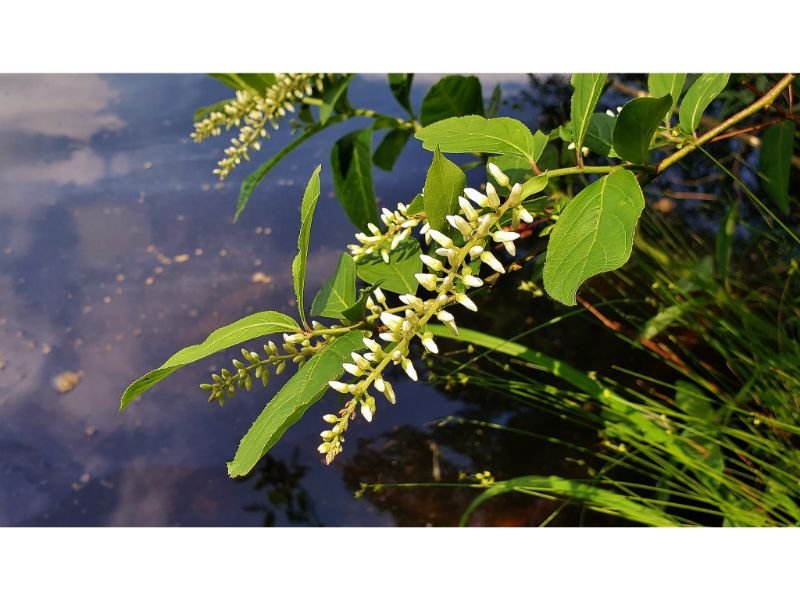
Approximate Size: 1.2 to 1.8 meters high and wide
Recommended Theme: Rain garden, wetland garden, woodland garden
Virginia sweetspire is not demanding when it comes to maintenance, as these shrubs can successfully thrive in almost any kind of soil, including in both shady and full-sun areas. They’re valued for their ornamental appeal in landscapes and generally are not considered invasive plants.
Did You Know?
Virginia sweetspire shrubs get their name from the sweet aroma emitted by the plants’ flowers. This pleasant smell is particularly noticeable during the plant’s blooming time, which is in late spring or early summer.
Northern Spicebush (Lindera benzoin)
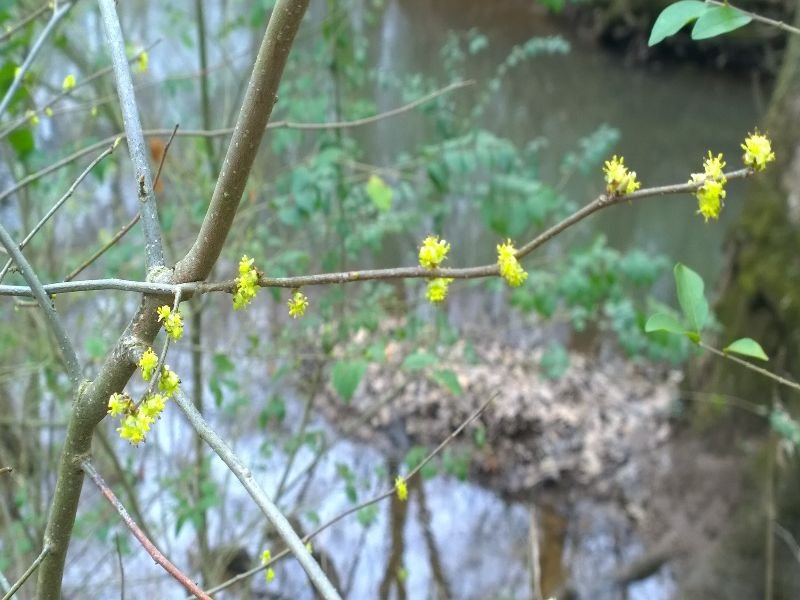
Approximate Size: 2 to 4 meters high and wide
Recommended Theme: Native garden, wetland garden, naturalized area
As precious and shining as gold, is how northern spicebush shrubs would get your attention. Northern spicebush shrubs have serrated, dark-green foliage that gradually turns into shades of red, yellow, and orange during fall. They’re adaptable to both humid and drier areas, making them suitable not only as shrubs for wet areas in Zone 8 but also as a gorgeous addition to woodland gardens.
Did You Know?
Northern spicebush shrubs share the same uniqueness as swamp azalea shrubs, as both plants are home and host plants for spicebush swallowtail butterflies.
Plants for Wet Areas Zone 8 That Like Clay Soil
Swamp Milkweed (Asclepias incarnata)
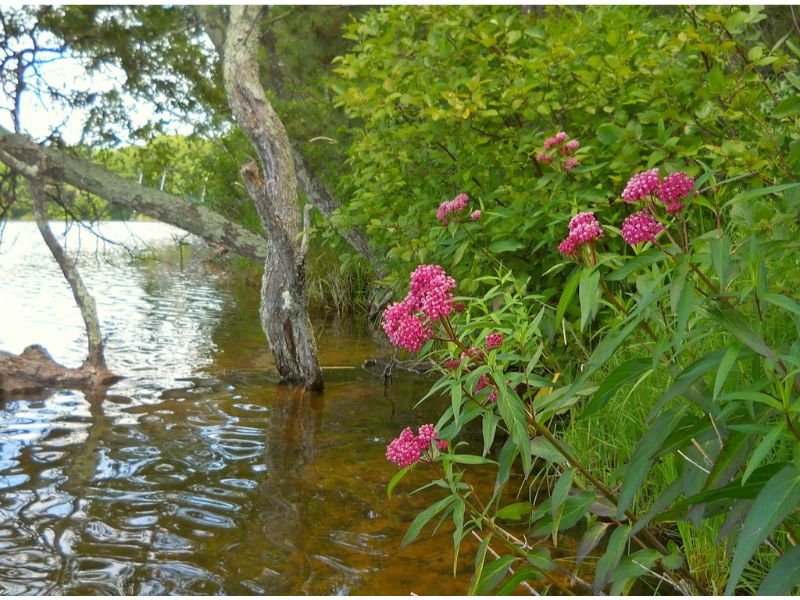
Approximate Size: 1 to 1.5 meters high and 0.3 to 0.6 meters wide
Recommended Theme: Bog garden, wetland garden, pollinators garden
Besides the wonderful shrubs for wet areas in Zone 8, flowering plants like swamp milkweed could also enhance the beauty of your wetland garden. Swamp milkweed thrives in areas with full sun or shady areas and requires regular watering but minimal fertilizing. Minimal pruning is needed to keep this plant in shape as well as to remove any spent blooms.
Did You Know?
The stems of swamp milkweed contain fibrous strands that were used by Native Americans and early European settlers to make a thread.
Waterhyssop (Bacopa monnieri)
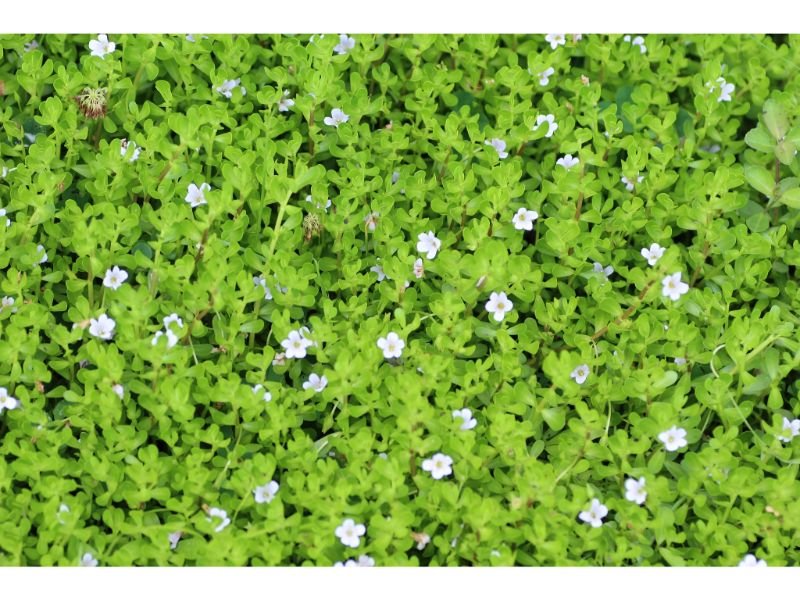
Approximate Size: 0.1 to 0.3 meters high and wide
Recommended Theme: Bog garden, aquatic garden, pond area
Unlike the previous plants and shrubs for wet areas in Zone 8, waterhyssop is a true water-loving plant that loves being soaked in water all the time. This plant is usually cultivated as a semi-aquatic or aquatic creeping perennial herb. They procure small and delicate, 5-petaled blooms that come in a white or light blue hue.
Did You Know?
Waterhyssop is one of the primary plants in the world of Ayurvedic and traditional medicine. This plant is believed to have cognitive-enhancing properties, boost memory, and increase concentration.
Water Canna (Canna glauca)

Approximate Size: 1 to 1.5 meters high and 0.6 to 1 meter wide
Recommended Theme: Water garden, bog garden, tropical garden
Aside from clay soil, water canna also tolerates thriving in wet soil, and can even tolerate being partially submerged in water. This plant is a perfect match for other pollinator-magnet shrubs for wet areas in Zone 8 like swamp azalea shrubs, as these two also share similar cultivation needs.
Did You Know?
Water canna produces vibrant yellow flowers that resemble a large and inverted orchid. These flowers are the plant’s most notable part and are also attractive to hummingbirds.
Deer-Tolerant Plants for Wetland of Zone 8
Japanese Iris (Iris laevigata)
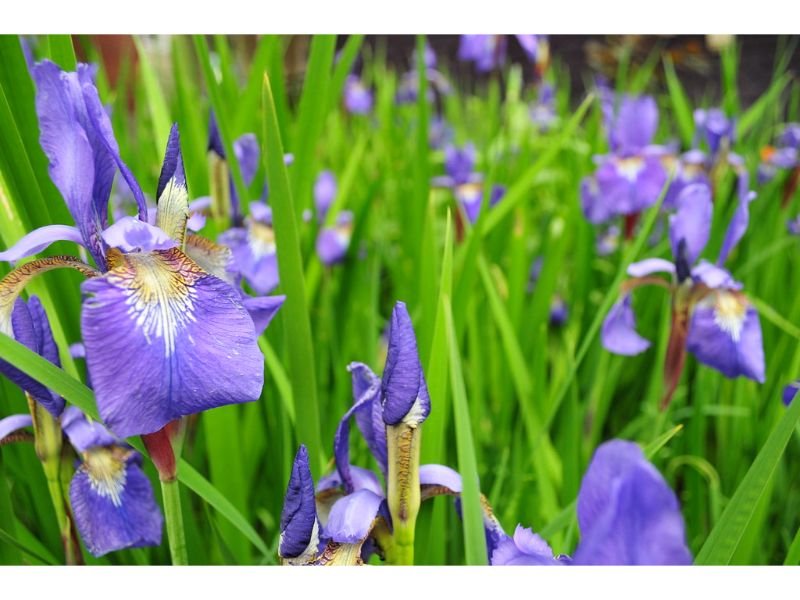
Approximate Size: 0.6 to 1 meter high and wide
Recommended Theme: Water garden, zen garden, pond area
Japanese iris features flowers that not only bloom in shades of purple, but also blue, white, and even pale pink. In hotter climates, this plant needs about 4 hours daily to be in partial shade to protect its delicate leaves and flowers from intense sunlight. Japanese iris prefers areas with high to moderate humidity.
Did You Know?
Japanese iris is highly prized for its cultural significance. In Japanese culture, this plant is seen as a symbol of elegance, and purity, and as a reminder of the arrival of summer.
Blue Cardinal Flower (Lobelia siphilitica)
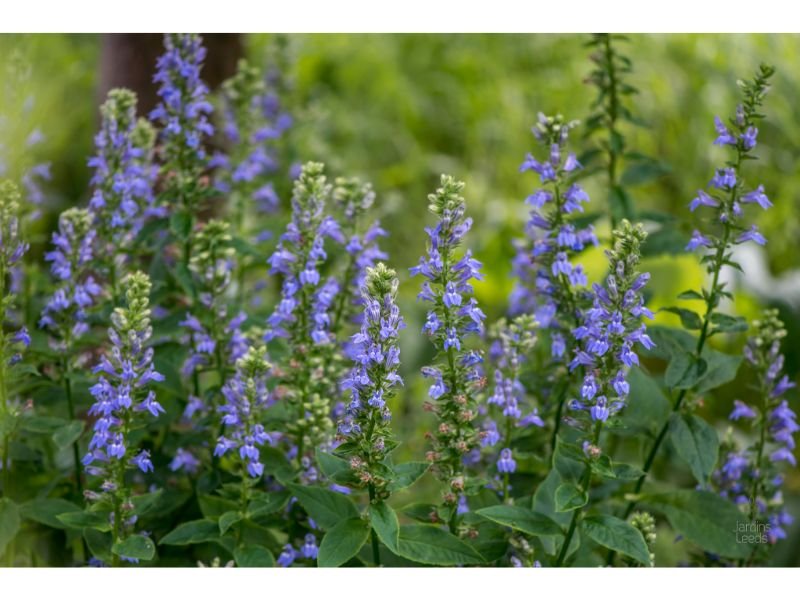
Approximate Size: 1 to 1.5 meters high and 0.5 to 0.7 meters wide
Recommended Theme: Water garden, cottage garden, pollinator garden
Although usually thrives in loamy soil with high organic matter, blue cardinal flowers would not mind growing in other types of soil, including sandy and clay. This flower needs to be kept consistently moist and can benefit from regular pruning to prolong its blooming time. Blue cardinal flowers can be paired not only with shrubs for wet areas in Zone 8 but also with any other moist-loving plants such as marsh marigold and joe-pye weed.
Did You Know?
The blue cardinal flower produces tall spikes and vibrant blue flowers that resemble the beak of a cardinal bird. This flower is believed by Native American tribes for its healing properties.
Wetland Plants and Shrubs for Zone 8: A Brief Conclusion
By incorporating plants and shrubs for wet areas in Zone 8, you can change the challenging environment for various plants to thrive into a showstopper landscape. Not only do these plants enhance the aesthetics of the garden, but they also play a crucial role in supporting the overall ecosystem and attracting pollinators.

New author in the hood. Loves gardening and flowers are my spirit animals (yes I know they are not animals but I insist). I will be covering most of the flowers’ topics here and occasionally random though as well.






